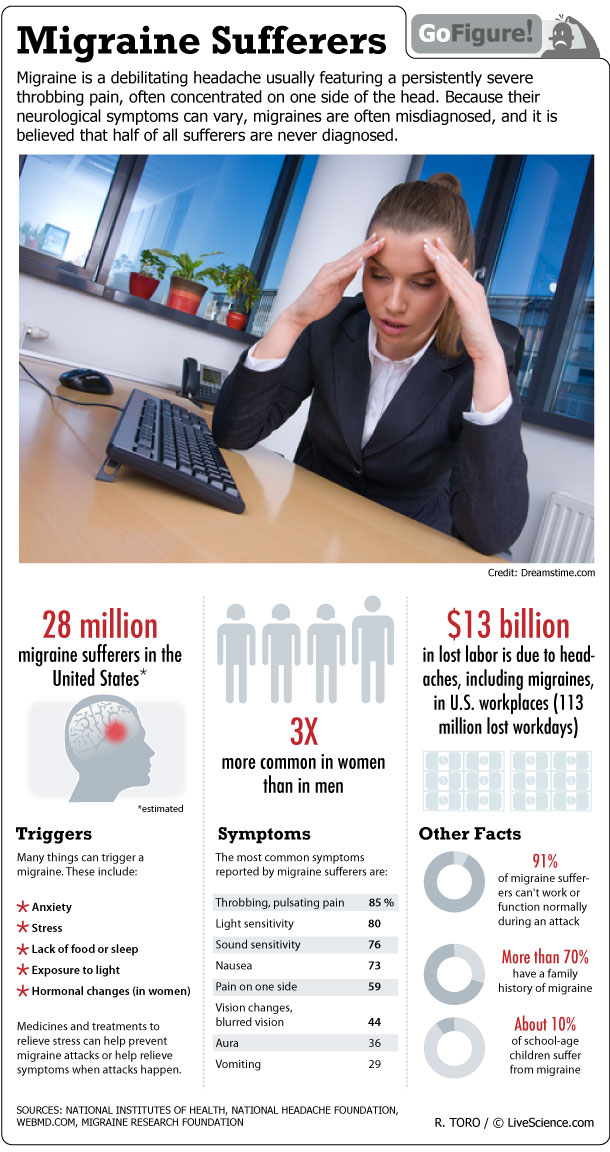Big Headaches: Facts on Migraines (Infographic)

Modern life can really be a headache, with stress and sensory overload triggering both garden-variety headaches and their nastier cousins migraines, research has found.
Migraine headaches can be a particular pain for anyone who has experienced one, usually described as a throbbing or pulsating in one area of the head. The throbbing is often accompanied by an extreme sensitivity to light and sound, according to the National Institutes of Health (NIH).
While about 30 million Americans are affected by migraines, women have it rougher, being three times more likely than men to suffer from them.
Scientists have continued to conduct studies in an effort to figure out the causes and possible cures for the ache. While scientists once thought that migraines were linked to the dilation and constriction of blood vessels in the head, they are beginning to find evidence that inherited abnormalities in genes that control the activities of certain cell populations in the brain are the cause.
In fact, in 2010 researchers reported the first genetic risk factor for migraines -- a gene variant also found to change activity of other genes, including one previously linked to disorders such as epilepsy and schizophrenia.
In one study published in 2010 in the journal Nature Neuroscience, researchers working with both rats and humans found a visual pathway in the brain may underlie light sensitivity during migraines. In the rat part of the study, they found that light triggered a flow of electrical signals that converged on a group of brain cells, which they called "migraine neurons."
"Clinically, this research sets the stage for identifying ways to block the pathway so that migraine patients can endure light without pain," said study researcher, Rami Burstein of Beth Israel Deaconess Medical Center and Harvard Medical School in Boston, Mass., in 2010.
Get the world’s most fascinating discoveries delivered straight to your inbox.
One possible silver lining: Research published in 2008 in the journal Cancer Epidemiology suggested migraine headaches are linked to a lower risk of breast cancer.



